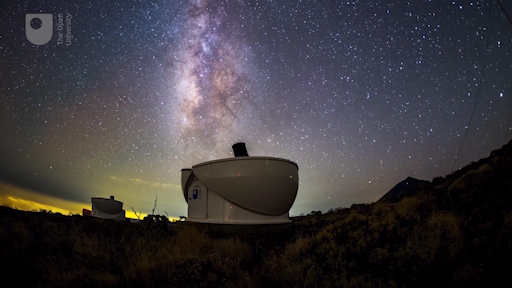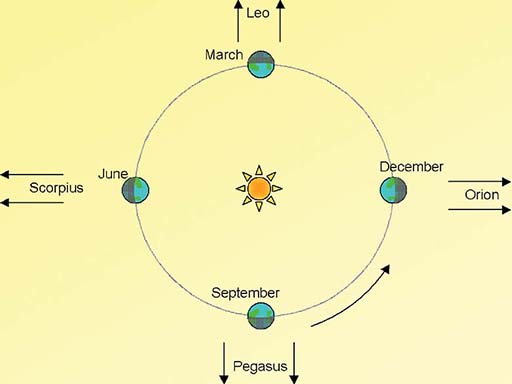2.1 Our changing view of the sky
The apparent motion of objects in the night sky is caused by the rotation of the Earth, which turns on its axis once every 24 hours. As a result of this rotation, the Moon and other objects as seen from the northern hemisphere will rise on the eastern side of the sky, reach their highest point in the south, and set towards the west.

Transcript
If you are lucky enough to have a clear view of the night sky from home or nearby, you may like to observe this motion by looking out at hourly intervals during a clear evening and noting the positions of a bright object such as the Moon or a bright star over a period of a few hours and follow its motion across the sky.
The Earth also moves in its orbit around the Sun, causing a slower change in our view of the night sky with the seasons. Each month, the side of the Earth facing away from the Sun faces out in a different direction into space. Over the course of a year objects will rise slightly earlier each evening, with the whole pattern of constellations taking twelve months to go through one complete cycle.
Box _unit2.3.1
To view larger versions of diagrams on the course click ‘View larger image’ located underneath the figure on the left-hand side.

Of course not everyone will have access to a good viewing site, and the weather can also make observing difficult. Fortunately, much of the observing that you will be doing on this course will be done from the COAST observatory, which is high up and has a much higher likelihood of clear skies. It’s time for our first visit to Tenerife!
